
MODULE 11 - COMMON CHALLENGES
CHAPTER 2: THE TROUBLE WITH ELK

In the previous Chapter, I mentioned several “natural” challenges that can affect the outcome of an elk hunt. I don’t want this Module to become a discouraging look into the reality of elk hunting, but I think it’s important to recognize the things that can go wrong, and have a game plan of what to do when these things happen. And they will. Expecting a few bumps along the trail, as well as being prepared to react to them, is critical in being successful as an elk hunter.
I focused on several natural occurrences that can hamper elk hunting, and I want to now shift gears and look at how the dynamics within an elk herd can affect elk hunting. These dynamics include elk density, bull-to-cow ratios, size of the herds, and elk vocalization.
ELK DENSITY
As I mentioned previously, elk densities within particular areas can change from year to year, and play a role in the quality of your hunt. Predators, fires, and weather – along with other factors – can decrease populations, concentrate populations, or scatter populations. Additionally, state Fish and Wildlife departments establish management objectives that assist in keeping the elk populations within a certain range within specific areas.
I think we would all agree that the ideal situation for elk hunting would be a high number of bulls and a moderate number of cows, with an large overall population of elk. This would create breeding competition between the bulls, and the rut activity would be intense. However, there are very few areas where these objectives are achieved, especially in public land, over-the-counter units.
Even within individual units, there can be drastic differences in elk densities, which can create drastic differences in your overall hunting experience. Where overall elk densities are low (low numbers of elk spread out over a large area), finding elk can be a challenge. When you bump the elk and chase them out of their comfort area, it may be several days before you find another herd of elk to hunt.
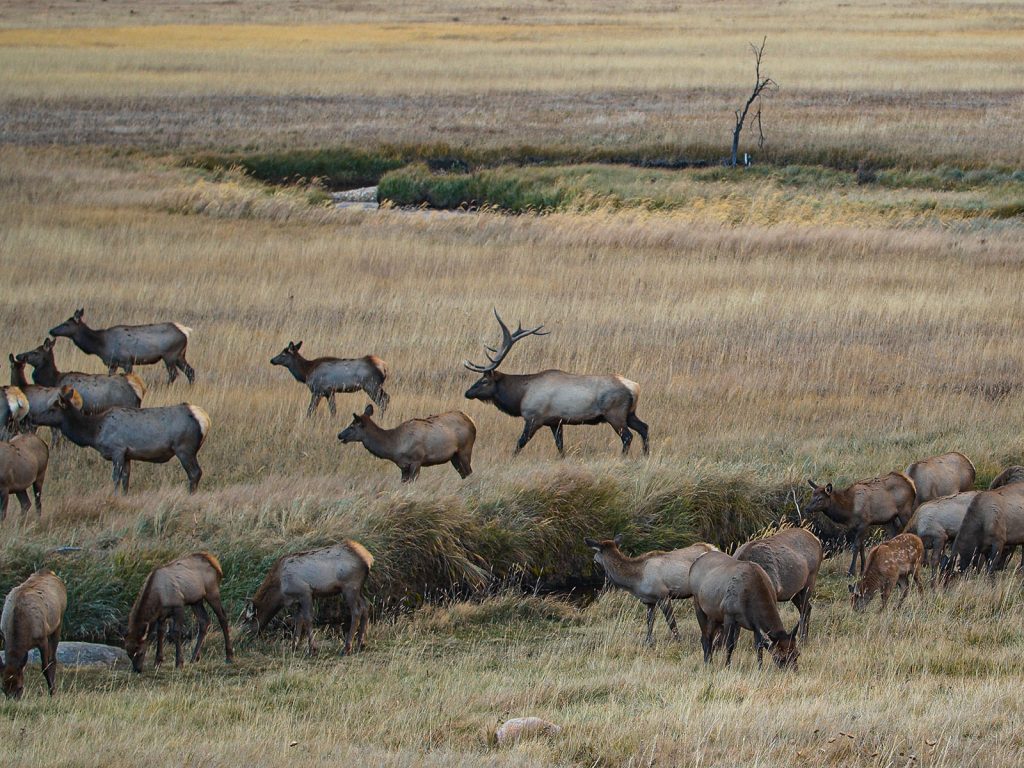
The positive aspects of these areas are that there are usually fewer hunters there, so the elk seem to tolerate your pressure a little more. If you play it right, it is possible to spend your week hunting the same small herd of elk. Additionally, the lack of other hunting pressure coupled with the new competition from another bull can be a good recipe for agitating the herd bull and creating great calling opportunities.
On the other end of the spectrum, there are pros and cons for hunting in an area with higher elk densities. One of the benefits is that you will be able to find elk easier and more often. When you mess up an opportunity, there will often be another opportunity waiting for you just around the next ridge.
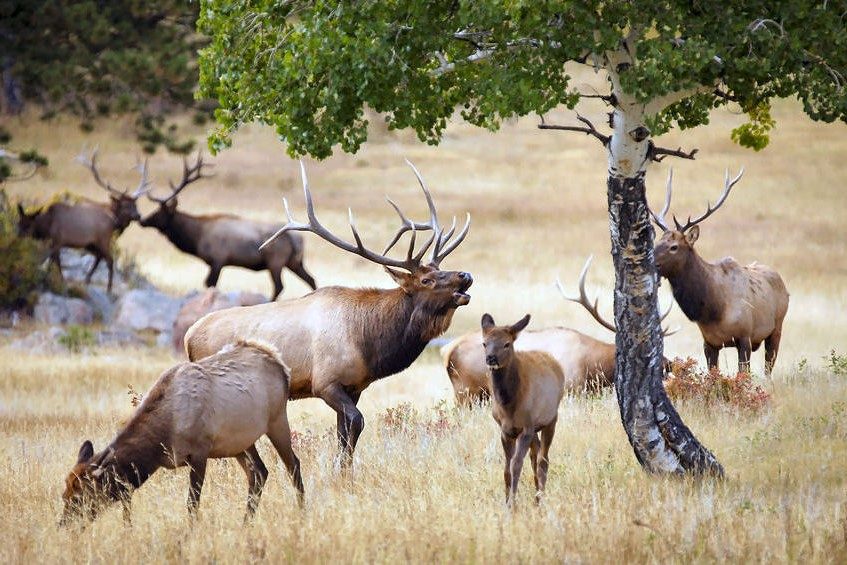
The downside to high elk densities (especially in OTC units) can be the number of other hunters you will likely run into. Additionally, more eyes and ears – and noses – can create a very challenging environment for getting close to the herd bulls.
BULL-TO-COW RATIOS
Even within these areas of high elk densities, there are other factors that can completely change the dynamics of the herds, and your hunt. If there are high elk densities, but a low bull-to-cow ratio (tons of cows but few bulls), it can be tough to call in bulls. The bulls have plenty of cows to choose from, and aren’t as desperate (or willing) to come in to steal a few cows away from a competing bull. The high population of elk now becomes a hurdle as you try to maneuver through hundreds of cows to get close to the bull.
On the flip side, high numbers of elk coupled with a high bull-to-cow ratio can be a great recipe for success. The bugling action in these areas can be off the charts, and with bulls continually fighting and stealing cows, you can have multiple opportunities every day.
Many states publish their management objectives within each unit, including overall populations and bull-to-cow ratios. This information can be very helpful in deciding where to hunt, but it can also help determine how you will need to hunt a certain area.
Beyond of the overall densities, populations, and dynamics of the elk herds, once the bulls have gathered their herds, several more challenges are often presented. As mentioned previously, within a herd there are more eyes, ears, and noses on the continual lookout for danger. Additionally, at this point, the bull has what he is looking for. Pulling a herd bull away from his cows can be a challenge in just about any scenario, whether he is vocal or not.
NON-VOCAL ELK
Perhaps one of the most frustrating situations to deal with – especially if you are using calls – is non-vocal elk. There are many factors that can contribute to elk being less vocal, and we’ve discussed many of them already – predators, hunting pressure, heat/drought, etc. My personal hunting style does not bode well for trying to hunt elk that don’t want to talk, so I’ve found a few ways to help overcome that hurdle.
First, it’s important to determine two things before you just chalk up your lack of success to non-vocal elk: 1) Are there even elk in the area?, and 2) Why are they not talking?
If you are confident that there are elk in the area, not hearing any bugles can be incredibly frustrating. This is more of a problem in areas where the challenges we’ve previously discussed are prevalent. Additionally, the more of those challenges that exist in one location, the less vocal the elk seem to be. If you have an area where there is a ton of hunting pressure, lots of predators, hot, dry conditions, and a full moon, you might not hear many – or any – bugles. So, what can you do to overcome this challenge? Go somewhere else.
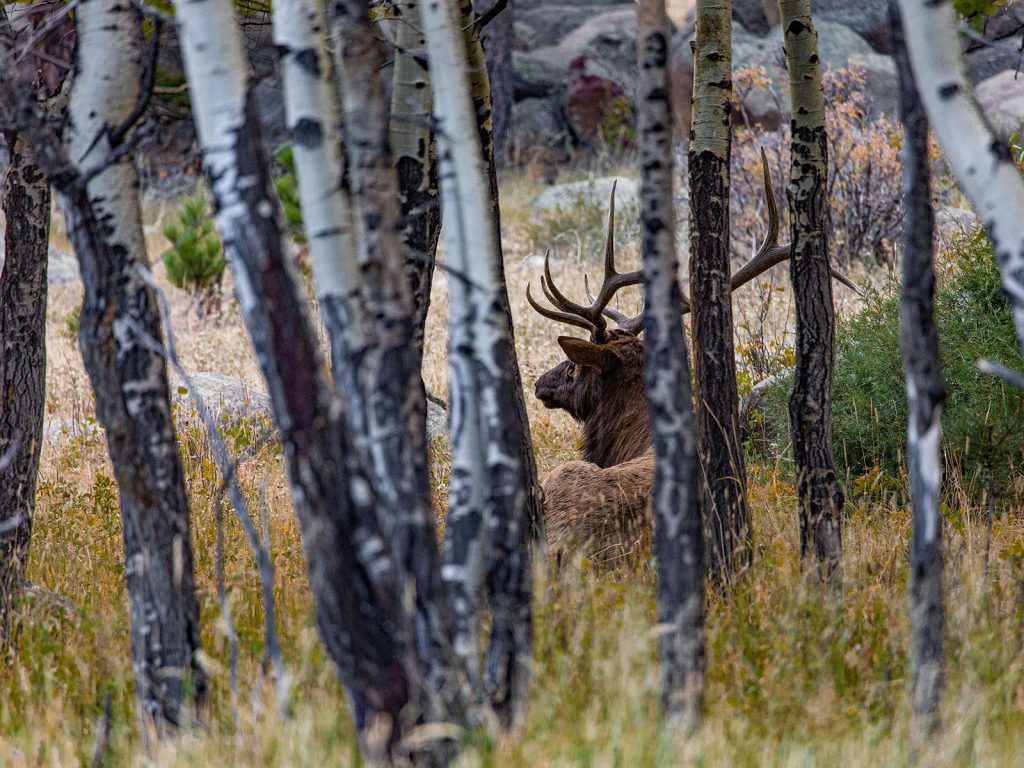
Seriously, you can’t control the number of hunters or predators in that particular area, and you can’t control the weather or the moon. But, you can control where you hunt. If I am up against horribly frustrating conditions that are causing the elk to be silent when they should be talking, I go somewhere else. I firmly believe that somewhere within every unit, there is an elk that will talk every day during the rut. It then becomes my mission to find that elk.
If relocating simply isn’t an option (and I don’t know why it wouldn’t be), then you are going to have to adapt. If the elk are there but they aren’t talking, you’re going to have to use an alternate method to hunt them. This is when it becomes important to figure out exactly why they aren’t talking. Then, adjust your hunting style to give you the best chance of succeeding.
If you end up hunting non-vocal elk, you might have to resort to using optics to spot elk as they feed at first light, and then employ the art of stalking. Or, you might need to focus your efforts on finding water sources where the elk are concentrated, and using a treestand or ground blind to intercept them as they move at first light. There are always options, and the most consistently successful elk hunters realize when their methods aren’t working, and adapt.
I will mention one “off-the-wall” tactic I’ve found to be helpful at squeezing a bugle out of a tight-lipped bull. Aside from my go-to method of getting close to the elk to get them to respond more readily, I’ve found that a Display Bugle will often get a bull to bugle back when no other bugles are eliciting a response. It doesn’t always ensure that I’ll be able to call the bull in, but sometimes the reassurance that the bull is still there – or that he is close – is all I am looking for.
A Display Bugle is often referred to as the “lip bawl”. It’s the sound bulls use to “display” their dominance to the cows. I sometimes refer to this bugle as the “Shock Bugle”. Similar to a “Shock Gobble” that turkey hunters use to get a tom turkey to respond, this call seems to work better when nothing else is working. Again, it doesn’t necessarily work to call the bull in, but if I’m trying to pry a sound out of him, I’ve had success using the “Shock Bugle”.
Click below to listen to my demonstration of the “lip bawl” or “Shock Bugle”:
VOCAL ELK THAT "BUGLE & RUN"
If there is anything that I find more frustrating than non-vocal elk, it can be vocal elk that just won’t come to my calls! If you’ve called elk for more than a season or two, you have likely encountered the herd bulls that always seem to round up their cows and leave for no apparent reason…especially when you get in close! It’s important in these situations to understand why these elk bugle and run. I truly feel that there is always a reason a bull reacts one way or another, and in this case, there are a handful of options to consider.
When you are calling to a bull and trying to entice him into your setup, put yourself in the bull’s shoes. What is going through his mind? What can you do (or say) that is going to make him come to you? If you were an elk, what could another elk do or say to make you go to him? What are some of the things that might prevent the bull from coming in? When you break down these situations in such a way, answers – and the associated solutions – often times become more recognizable.
The main reasons I’ve found that a bull will round up his cows and leave usually involve one of the following:
1) He has been pressured over and over by hunters and is wary.
2) He is a younger bull with cows that doesn’t want to lose his harem to a bigger bull.
3) He is a bigger bull that has established his harem and is focused on his cows that are coming into estrous.
4) The elk’s senses are alerting them to possible danger (seeing movement that is out of place, hearing noises that aren’t natural, or smelling stinky humans).
Outside of these four issues, there really isn’t much that will push a rutting bull away. It’s certainly not a fully comprehensive list, but I’d say those four situations cover about 75% of the instances when I’ve seen a bull takes his cows and leaves.
1. WARY DUE TO PRESSURE
It’s no secret that if you are hunting an OTC/general tag on public land, you can expect some level of hunting pressure from other hunters. And, it is also obvious that if there is pressure from other hunters, it can affect the way the elk responds and reacts, especially to your calling. An elk that has been called in to a setup and winded a hunter becomes more wary each time he hears a bugle. It doesn’t mean he can’t be called in, but he recognizes pressure and the associated dangers. The more pressure the bull receives, the less likely he is going to be to come in, even if he is generally vocal and responsive.
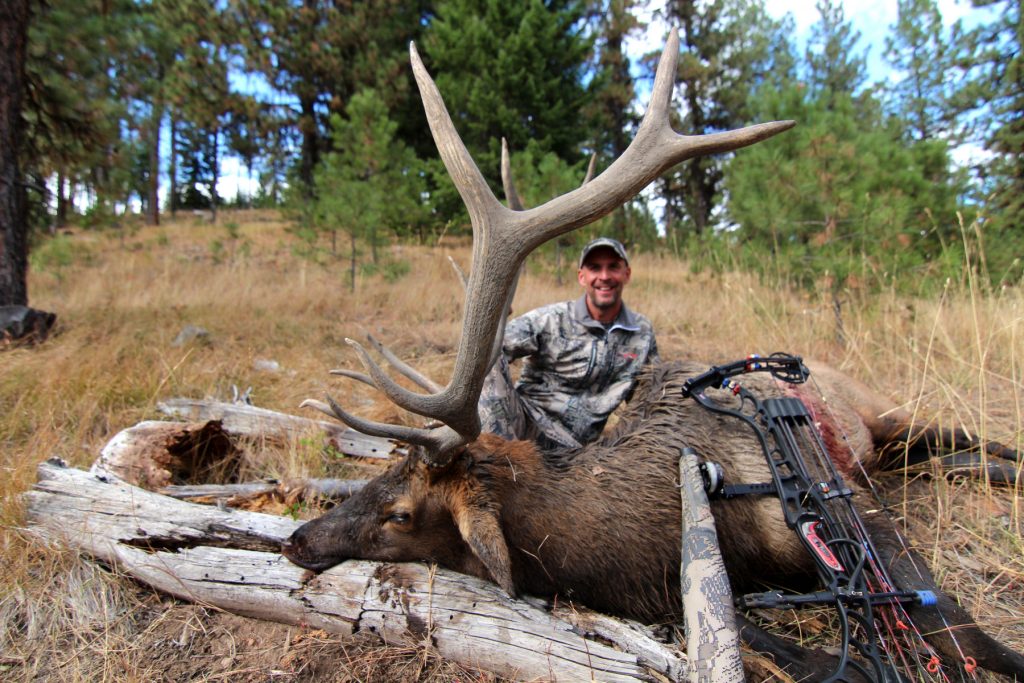
Two seasons ago, I drew a hard-to-draw elk tag in Oregon in a unit that is known to have some nice bulls. I did my research, and even made a pre-season scouting trip to the unit to get a better feel for the area. Due to my previous experiences with Oregon elk, I chose to hunt later in the season, and scheduled to hunt Oregon the last week of the season and go to Montana earlier. After just a few hours in the unit, I knew it was going to be tough.
We mountain biked into one of the areas we had scouted, and found evidence of other hunters everywhere. Bike tracks, boot tracks, etc. At dark, headlights from other hunters on mountain bikes dotted the adjacent hillsides. We were not alone. Unfortunately, the elk wanted to be.
We relocated multiple times, trying to find pockets of less accessible country where the elk might have received less pressure. However, by the 4th week of the season, we found very few areas where this was the case. We found areas where there weren’t many hunters at the time, but they had been there not long before.
The bulls we called to were herded up, and it seemed like any sound we threw at them resulted in them moving off at a pace that was faster than we could follow. I managed to get close to several elk, but they weren’t acting like elk should act during the last week of September – especially in a controlled hunt. There were mature bulls with one or two cows that literally wouldn’t bugle, even when we got close. There were big bulls that would bugle, but wouldn’t let us get close. There were young bulls without cows that took way more effort to coax in than they should have. And all of this was the result of too much hunting pressure on the elk. Unfortunately, returning a week earlier the next season wasn’t an option, and we had to make do with what we had.
I could have easily thrown in the cards and blamed the poor experience on the other hunters, but that isn’t the way I’m wired. Don’t get me wrong….I did my fair share of whining, but we dug deep and made it happen. We ended up going 2-for-2 on 6-point bulls…..and mine came on the last afternoon of the hunt. How did we do it? Persistence. We knew the elk had been pressured, and we just had to find the right bull on the right day and capitalize on every single limited opportunity that came along. So, we kept pushing on.
We found tiny little pockets that were overlooked where the elk were most likely to retreat to when pressured. We hiked. A lot. We changed tactics, and started doing more stalking once we heard a bugle, rather than relying so heavily on the calls. I threw every calling tactic I knew at the elk, and in the end, both of the bulls we killed were called in. I found raking to be a very effective addition to my calling sequences, and it ended up being the factor that sealed the deal. But, they didn’t come easy.
Here is the video from that Oregon hunt with my buddy, David Burdette:
If I could do it over, I would go back earlier in the season next time before the elk get too pressured. Every day of season brings more human encounters to the elk, so the later in the season you hunt, it’s that much more likely that the bulls will have been pressured. Since I couldn’t change when I chose to hunt, I had to change how I hunted; going deeper to find less-pressured areas, looking for those over-looked pockets, slipping in close and then adjusting my aggression based upon each elk’s attitude. Even with these adjustments, there were still more elk that bugled and ran away than those who stood their ground or came in. And this was in a controlled hunt, not an OTC tag. With OTC tags, the opportunities are often even more limited. However, they aren’t completely non-existent.
2. YOUNG BULL RUNNING IN FEAR
Early in the season, it’s not uncommon for the younger, less mature bulls to be the first ones to get to the cows. I sometimes laugh, because it really seems like the big herd bulls sit back and let the smaller bulls do all the work of rounding up the cows. These younger bulls run around thinking they are the herd bulls, but once the actual rut kicks in, the big bulls show up and take over. They do the breeding, then ride off into the sunset.
Oftentimes, I’ve seen young bulls who have found themselves at the head of the herd that are scared to death to lose their cows. Knowing they don’t stand a chance of surviving a battle with a more mature herd bull, they become accustomed to rounding up their cows and running away from potential fights.
Honestly though, this situation is probably the least likely of the four I mentioned. However, it is worth mentioning, as an adjustment to tactics and an understanding of the bull’s thought process can bring success. In these cases, if a young bull has cows and hears several more cows, he will get excited. If he bugles in his excitement, then gets cut off by an aggressive challenge bugle, he might flee the scene. If, on the other hand, he hears a wimpy little bugle, not unlike his own, he might have enough courage to come in and try his hand at securing a few more cows.
Again, put yourself into the elk’s mindset. Why would this bull be running? What do I need to do to convince him to come in and what can I do to ease the concerns that are making him run away in the first place?
3. MATURE HERD BULL THAT IS FOCUSED ON BREEDING
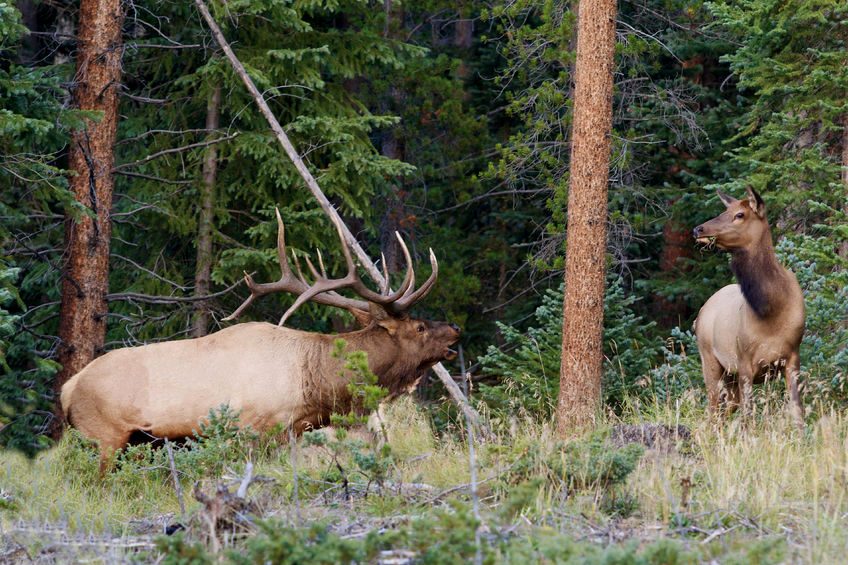
A few years ago, we were hunting in Wyoming on a general archery tag. The area we chose to hunt that season had plenty of pressure, but we were confident in our ability to get away from the crowds and find the elk. To some degree, we were able to do both. However, we struggled for 8 days to actually call an elk in. We heard hundreds of bugles each day, but pulling the bulls away and into our setups was difficult. In fact, it was one of the most difficult hunts I have been on.
We were hunting during the peak of the rut. Cows were in estrous, and the bulls were screaming their heads off. It should have been a dream hunt, and except for the fact that we didn’t fill an elk tag, it was a crazy good hunt. But for someone who loves calling elk, it was incredibly difficult to set my elk calls down.
We followed bugle after bugle, day after day, from the bottom of the mountain, all the way to the top. No matter how convincing we sounded, we could not get a bull to come away from the herd and come to our calls. Even the younger bulls were glued to the herd, trying like crazy to slip in and steal away a cow.
The cows were in estrous, and they had the bull’s full attention. Turning his attention to anything other than those cows that were right in front of him could lead to another bull stealing his cows, so the herd bulls simply weren’t taking any chances. Finally, after slowly recognizing – or at least admitting – that calling wasn’t the most effective tactic, we changed it up and had better luck.
I found two things that seemed to work in this situation. First, I went completely quiet other than using the calls to locate an elk if needed. Once I had an elk located, I just followed the herd up the mountain. I was able to get in close to several elk, and as badly as I wanted to call, I didn’t. From there, it became simply a matter of putting myself in a position that would increase my chances of the bull chasing a cow by me, or just getting close enough to get a shot without being detected. I didn’t call in a single bull on that hunt, but I did have three opportunities at nice 6-point bulls simply by following their bugles and slipping in silently on the herds.
The other thing that I found effective that season was raking. I was able to pry a couple herd bulls away from their herds with nothing more than raking. If I added a call - cow call or bugle – the bull would go quiet and slip back to his herd. But if I solely raked a tree, the herd bulls seemed more likely to come in to check me out.
4. DANGER! STRANGER!
The number one reason I’ve found for elk remaining vocal but running away is when their senses become aware of danger. I can’t tell you how many stories I’ve listened to from frustrated hunters who talk about elk just moving away from their calling for “no reason”. When I ask what direction the wind was going, they brush it off and blame the situation on “call-shy” elk. Or, they revert back to the argument that a herd bull simply can’t be called in.
Most elk hunters don’t pay attention to the wind nearly enough. I hope that throughout this Online Elk Hunting Course, I’ve talked about the wind enough times that you won’t ever be guilty of this. You will never beat an elk’s nose if even the slightest breeze or thermal is moving toward them. I’m sure there will be one or two people reading this that will have an example of when they had an elk walk right up to them with the wind at their back, but do not rely on this or hope it will work for you. Pay attention to the wind! Always.
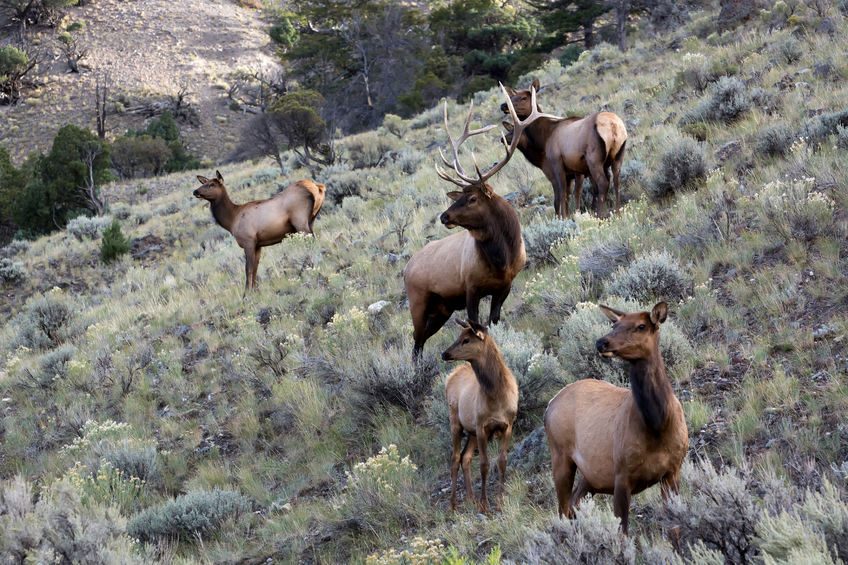
Beyond their sense of smell, an elk’s sense of sight and hearing can disrupt even the most stealthy of approaches from hunters. I’ve actually heard other hunters talking in audible voices from 200 yards away as they hike along a ridgetop, just seconds before they stop and let out a bugle. Elk can hear far better than I can, and they know what humans sound like. And they associate the sound of humans with danger. Be mindful of the noise you make, and give the elk more credit than you want to for their sense of hearing. Any unnatural sound can alert them to danger and make them intensely aware of their surroundings.
Lastly, pay attention to your movements as you close the distance on elk. A straggling spike or cow that is lagging behind the herd might see you and quietly run to the herd to alert them of danger. From there, it will be hard to convince the rest of the elk that there isn’t danger behind them.
In a nutshell, if an elk isn’t vocal, or if it is vocal but won’t come in, there is a reason. The more you can understand how an elk thinks, and recognize why it won’t come in, the more readily you’ll be able to adjust and overcome these challenges.
SUMMARY
Hopefully, within all of these Modules, you are able to find information that will increase your chances of being a more successful elk hunter. I’ve shared everything I know – all the tips and tactics and knowledge I have. I’ve covered all the common challenges that often provide obstacles during the hunt, as well as some ways to overcome or minimize their effects. At this point, all of your hard work should present you with a shot opportunity on an elk. However, a shot opportunity does not always immediately precede success.
Things can and do happen that are beyond our control, even at the moment of truth. A good shot doesn’t always end with the elk falling over within sight. A bad shot, hardly ever does. Learning to track and bloodtrail an elk is vital to finishing the job and ensuring success.
Click ‘Next Module’ Below to Continue to Module 12: Tracking and Bloodtrailing




